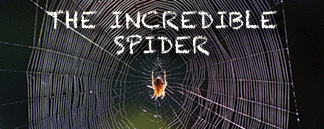

In previous issues of this periodical, we have had some discussion of the properties of spider webs and how the material is designed for specific jobs. Studies of spider webs have led to miracle fabrics and a variety of modern materials that have been useful in industrial applications. Experts say that the silk of an orb spider is so strong that a strand of it, if it were as thick as a pencil, could stop a jumbo jet in flight.
Most of us have a form of arachnophobia (fear of spiders), and yet these creatures do wonderful things for humans. The most obvious is the removal of insects from our homes and gardens. All spiders are meat eaters, and they are equipped in a unique ways to find and destroy massive numbers of insects. Most spiders have eight eyes that are arranged in a way to detect the primary insects they are programmed to remove from the population on Earth. Spiders taste and smell through sensory organs on their legs. This enables them to identify their prey without having to bite into it. Spiders hear by sensing vibrations through the hairs that cover much of their body. Spiders are so sensitive to vibrations that they can tell the difference between a moth and a honeybee hitting their web. Spiders can regrow a lost leg. They have bristled hooks on the ends of their feet that allow them to grasp their webs without getting stuck.
There are 38,000 species of spiders in the world. They range from the size of a basketball to the size of the dot at the end of this sentence. After they hatch, spiderlings drift away from the mother spider on a silk filament. We all know that spider bites can be nasty, but these creatures were created by God to control the insect populations on Earth. The technical knowledge needed to design such a creature is beyond human ability. Source: Animal Encyclopedia published by National Geographic, © 2014, page 62.
Picture credits:
© roberto222. Image from BigStockPhoto.com
